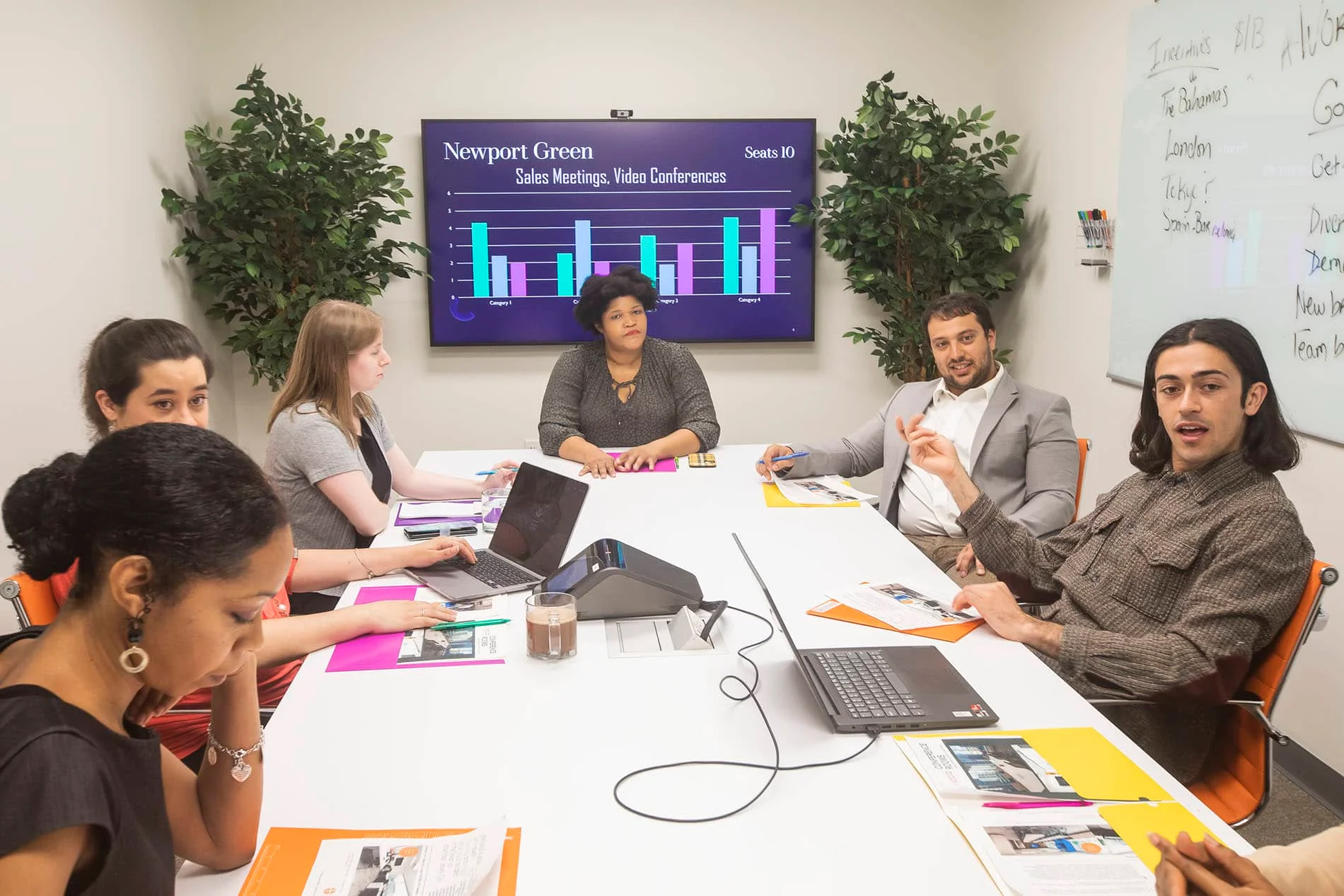Design thinking is a powerful methodology that enables individuals and organizations to approach problem-solving and innovation with a creative mindset. By focusing on empathy, collaboration, and iteration, design thinking empowers individuals to unleash their creative potential and find innovative solutions to complex challenges. In this article, we will explore the various aspects of design thinking and how it can be implemented to foster empowerment and ignite your creative spark.
Introduction: The Importance of Design in Everything
Design is everywhere. From the products we use to the spaces we inhabit, design plays a fundamental role in shaping our experiences and interactions. Whether it’s a beautifully designed smartphone or a thoughtfully laid-out store, design has the power to captivate and engage.
Design goes beyond aesthetics; it encompasses functionality, user experience, and emotional connection. In today’s competitive landscape, organizations that prioritize good design gain a competitive edge by delivering superior user experiences and building strong brand loyalty.
Design thinking recognizes the importance of design in everything and provides a framework to harness its power for problem-solving and innovation.
What is Design Thinking?
Design thinking is a human-centered approach to problem-solving that places emphasis on understanding the needs and desires of the end users. It involves a deep understanding of the user’s perspective, empathy, and iterative prototyping to arrive at solutions that are not only functional but also highly user-centric.
At its core, design thinking is all about creatively reframing problems and finding innovative solutions. It is a mindset that encourages individuals to challenge assumptions, think outside the box, and approach problem-solving with a fresh perspective.
One of the key principles of design thinking is the concept of “rapid prototyping.” This involves creating quick, low-cost prototypes of potential solutions to gather feedback and iterate on ideas rapidly. By testing ideas early in the design process, teams can identify flaws and make improvements before investing significant time and resources.
Furthermore, design thinking is a collaborative process that often involves interdisciplinary teams. By bringing together individuals with diverse backgrounds and skill sets, design thinking fosters a rich exchange of ideas and perspectives. This diversity of thought can lead to more robust solutions that take into account a wide range of factors and considerations.
How to Implement Design Thinking in Developing Your Brand
Design thinking can be a valuable tool in developing your brand identity and creating a memorable customer experience. By employing design thinking principles, you can gain insights into your target audience, define your brand values, and create a cohesive brand story that resonates with your customers.
One of the key aspects of implementing design thinking in brand development is empathizing with your customers. By understanding their needs, motivations, and pain points, you can tailor your brand messaging and offerings to deliver exceptional value.
Moreover, when implementing design thinking in developing your brand, it’s essential to encourage a culture of innovation within your team. By fostering a creative and collaborative environment, you can inspire fresh ideas and unique solutions that set your brand apart from the competition. This approach not only fuels creativity but also cultivates a sense of ownership and pride among team members, leading to a more authentic brand representation.
Additionally, integrating design thinking into your brand development process involves continuous iteration and refinement. This iterative approach allows you to test different strategies, gather feedback from customers, and make data-driven decisions to enhance your brand’s impact and relevance in the market. Embracing a mindset of constant improvement ensures that your brand remains agile and responsive to changing consumer preferences and market dynamics.
Why Design Thinking Works
Design thinking works because it challenges conventional thinking and encourages a deeper understanding of customer needs. By placing the end user at the heart of the design process, organizations can create products, services, and experiences that truly meet their customers’ expectations.
Moreover, design thinking promotes collaboration and interdisciplinary teamwork. By involving individuals from different backgrounds and perspectives, organizations can leverage diverse expertise to come up with truly innovative solutions. Lastly, design thinking is an iterative process that allows organizations to learn from failure and continuously improve. By embracing a culture of experimentation and iteration, organizations can address feedback and evolve their offerings based on real-world user experiences.
One of the key aspects of design thinking is empathy. This involves putting yourself in the shoes of the end user to truly understand their needs, desires, and pain points. By empathizing with users, organizations can gain valuable insights that drive the design process towards creating solutions that are not only functional but also emotionally resonant.
Additionally, design thinking encourages a human-centered approach to problem-solving. This means that solutions are crafted with a deep understanding of human behavior, emotions, and motivations. By designing with empathy and a focus on human needs, organizations can create products and services that forge meaningful connections with their target audience.
Design Thinking and Customer Personas
When developing products or solutions, understanding your target audience is crucial. Design thinking advocates the use of customer personas, which are fictional representations of your ideal customers, to gain deep insights into their needs, behaviors, and aspirations.
By defining customer personas, organizations can better empathize with their target audience and tailor their offerings to meet their specific needs. This step is vital in creating user-centric solutions that resonate with customers on a deeper level.
Design Thinking and Product Positioning
Product positioning is the process of creating a unique and compelling identity for your offering in the market. Design thinking can be instrumental in creating a strong product positioning strategy by aligning your product’s features and benefits with the needs and desires of your target audience.
Through design thinking, organizations can gain valuable insights into the market landscape and identify unmet needs or gaps in the existing offerings. This enables them to position their products in a way that differentiates them from competitors and creates a strong value proposition for customers.
The Beauty of Structure
Structure is an essential element of design thinking. It provides a framework for organizing ideas, gathering insights, and generating innovative solutions. By following a structured approach, individuals and teams can navigate the complexity of problem-solving and stay focused on the end goal.
The beauty of structure lies in its ability to bring clarity to chaos and guide the design process. It helps in breaking down complex problems into manageable chunks and facilitates efficient collaboration, ensuring that all stakeholders are aligned and working towards a common objective.
Shaping the Customer Journey
The customer journey encompasses all the touchpoints and interactions a customer has with a brand, from initial awareness to post-purchase support. Design thinking can be instrumental in shaping the customer journey by understanding and optimizing each interaction to create a seamless and delightful experience.
By mapping out the customer journey, organizations can identify pain points, uncover opportunities for improvement, and create impactful moments that build strong customer relationships. Design thinking provides a framework to integrate empathy and user-centricity at every step of the customer journey, ensuring that each interaction adds value and fosters loyalty.
The Testing and Iterating with Experience
Testing and iterating are integral components of the design thinking process. Instead of relying on assumptions, design thinking encourages a hands-on approach to gather real-world user feedback and continually improve the solution.
By prototyping and testing early and often, organizations can identify flaws and gather valuable insights that inform the iteration process. This iterative approach minimizes the risk of launching a product or service that does not resonate with the target audience and allows for continuous improvement based on user feedback.
In conclusion, design thinking is a powerful methodology that empowers individuals and organizations to approach problem-solving and innovation with a creative mindset. By integrating empathy, collaboration, and iteration, design thinking enables individuals to unleash their creative potential, find innovative solutions, and create meaningful experiences. Whether you are an entrepreneur looking to build a successful business or an organization seeking to foster innovation, design thinking can be a catalyst for empowerment and ignite your creative spark.









